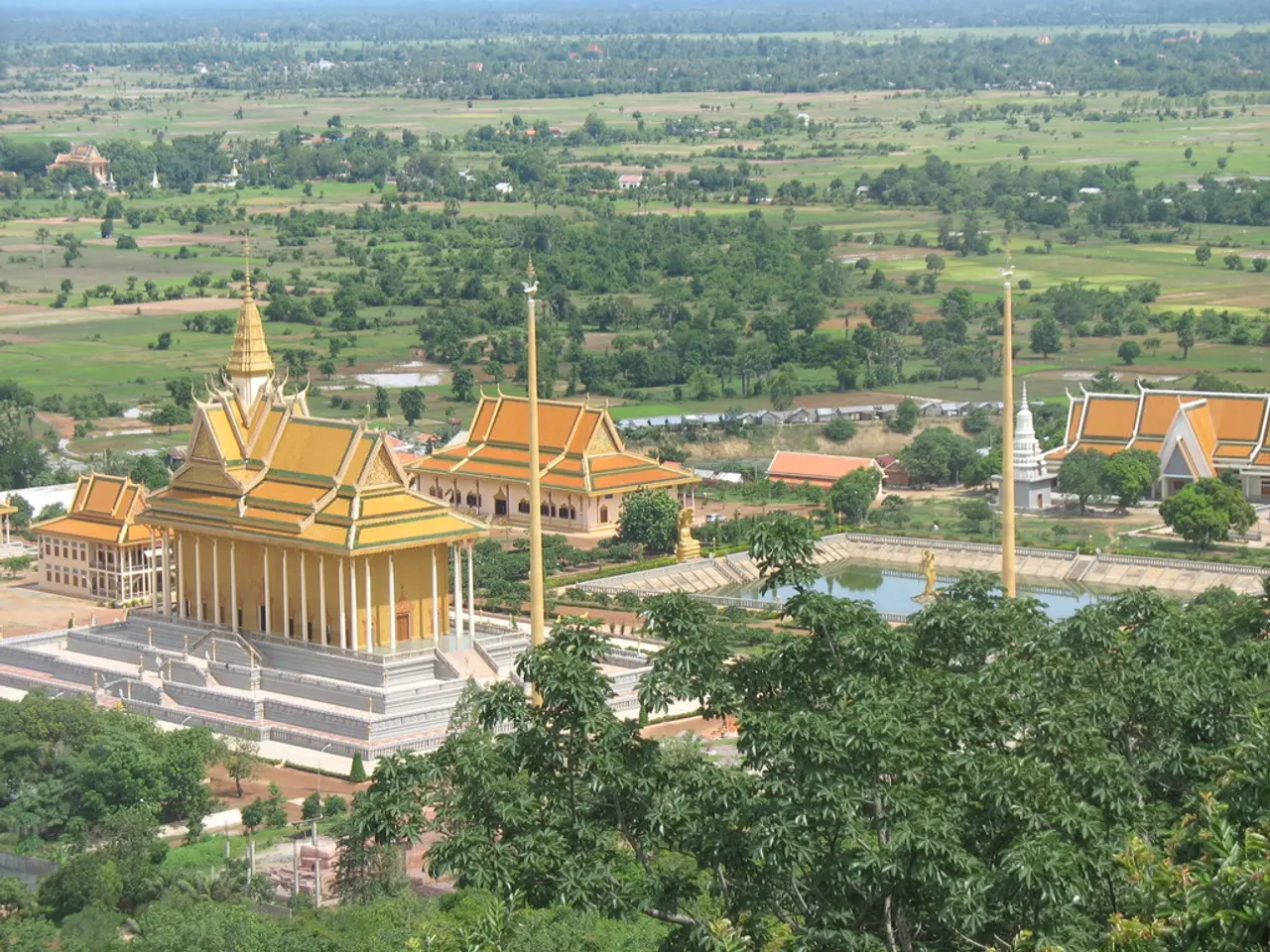Evolution of eclipse study's impact on science
In the annals of history, art has played a pivotal role in documenting and interpreting the rare and awe-inspiring phenomenon of eclipses. From ancient times to the modern era, artistic depictions have served as both historical records and tools aiding scientific observation, popularizing astronomical knowledge, and embedding these celestial events with cultural, scientific, and symbolic meanings.
During the early 20th century, public and scientific effort was dedicated to visual recording of solar eclipses. Photographers and observers stationed throughout cities mapped the shadow's path on earth meticulously, as seen in the 1925 solar eclipse in New York City [1]. Although not strictly "art" in the conventional sense, this convergence of technical and visual documentation linked to eclipses is noteworthy.
In earlier periods, before the advent of photography, artistic renditions through paintings, drawings, and sculptures were essential in preserving the memory and cultural significance of eclipses. Ancient Greek artists, for example, focused on idealized representations but also intertwined cosmic and divine symbolism in their art, indirectly reflecting astronomical insights of their time [3].
Advances in artistic techniques, such as the use of camera obscura, enhanced artists' ability to depict light and shadow realistically, crucial for portraying eclipses' unique lighting effects [4]. These artistic advances allowed more accurate and evocative representations, helping viewers understand the eclipse visually.
The role of art in understanding eclipses also intersects with early astronomy. Notably, astronomers like Hipparchus developed eclipse predictions rooted in observations; although not an artist himself, the transmission of his findings would have been aided by visual representation in manuscripts and diagrams to clarify complex celestial mechanics [2].
Fast forward to the 21st century, and the connection between art and eclipses remains strong. Giles Harrison, Professor of Atmospheric Physics at Reading University, organized an 'eclipse festival' to coincide with the last solar eclipse visible in the UK in March 2015 [5]. The Science Museum is planning a major exhibition about the Sun in 2018 [6].
Moreover, eclipse art has been of real utility to the scientific process. For instance, a series of paintings by American portrait painter Howard Russell Butler in 1918 supported the growing consensus among researchers that the corona was the Sun's atmosphere [7]. Konstantin Tsiolkovsky, a Russian scientist and pioneer of the cosmist movement, depicted an Earth eclipsing the Sun in an illustration produced for On the Moon in 1887 [8].
Eclipse art reveals intriguing occasions when the artistic eye has been of real utility to the scientific process. A paper published this week suggests that eclipses offer a window into the culture of the day [9]. Since the dawn of human consciousness, total eclipses have been perceived as unsettling and frightening [10]. The Polish Lutheran astronomer Johannes Hevelius illustrated how to safely observe the Sun and eclipses using engravings [11].
In ancient times, calendars were used to chart the rhythms of the heavens, including eclipses [12]. During the Renaissance, depictions of eclipses became more realistic, mirroring the rising influence of astronomical thinking [13].
In conclusion, art has been both a record and a medium through which people have depicted, interpreted, and deepened understanding of eclipses throughout history. From the pioneering example of citizen science in Edmond Halley's studies of an eclipse in 1715 [14], to Nicholas Roerich's symbolic reference to Russian armies marching east in his work, Prince Igor's Campaign of 1942 [15], art continues to capture the awe and wonder of these celestial events, while also contributing to our scientific understanding of the universe.
References:
[1] New York Times, 1925 Solar Eclipse
[2] Starry Night Education, Hipparchus
[3] British Museum, Art and Astronomy
[4] Royal Observatory Greenwich, Camera Obscura
[5] The Guardian, Eclipse Festival
[6] Science Museum, Sun Exhibition
[7] National Geographic, Howard Russell Butler
[8] NASA, Konstantin Tsiolkovsky
[9] The Conversation, Eclipses as a window into the culture of the day
[10] BBC History, Total Solar Eclipse
[11] National Maritime Museum, Johannes Hevelius
[12] Ancient History Encyclopedia, Calendars
[13] Royal Collection Trust, Leonardo da Vinci
[14] British Library, Edmond Halley
[15] Metropolitan Museum of Art, Nicholas Roerich
- The convergence of technical documentation and visual art's depiction of eclipses played a significant role in the early 20th century, with photographers and observers mapping the solar eclipse's path on earth.
- Artistic renditions through paintings, drawings, and sculptures were essential before the advent of photography in preserving the memory and cultural significance of eclipses during ancient times.
- The use of camera obscura in artistic techniques enhanced artists' ability to depict light and shadow realistically, crucial for portraying eclipses' unique lighting effects.
- Eclipse art has been valuable to the scientific process, with a series of paintings by Howard Russell Butler in the 1910s supporting growing scientific consensus about the corona being the Sun's atmosphere.
- In modern times, art continues to capture the awe and wonder of celestial events such as eclipses, as demonstrated by Giles Harrison's 'eclipse festival' and the Science Museum's planned Sun exhibition in 2018.
- Eclipse art offers a window into the culture of the day, as a recent paper suggests, with total eclipses being perceived as unsettling and frightening since the dawn of human consciousness.
- Astronomy and art have been intertwined throughout history, with astronomers like Hipparchus developing eclipse predictions rooted in observations, while Nicholas Roerich used symbolic references to eclipses in his works.




